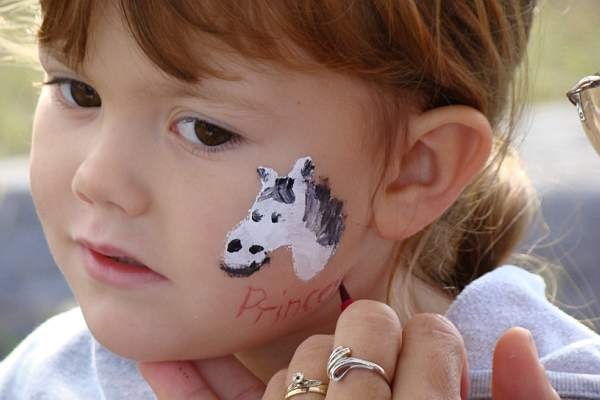Here are the 5 simple steps for safer face painting:
You must make sure that the personnel who is painting your children faces follows those precautions otherwise it is safer not to paint their faces at all
1: He must clean his hands with soap and water or using a sanitizer in between the sessions to prevent infection and germs transferring from one child to the next.
2: Make sure that the paints he is using are non-toxic and suitable for the skin. Paints that are not meant for the skin can cause allergic reactions like rashes. Also make sure that he doesn’t use ordinary metallic glitter, as these can irritate both the eyes and the skin. He also should dip the brushes in clean water before every session.
3: the child should always be attended. Otherwise he might accidentally fall off the chair or hurt his or her eyes with the paint and other tools.
4: Make the child behave and explain to him or her the need to be still while he is having his face painted. A child who is constantly moving or making sudden movements presents a risk of getting into an accident. The paint may go into the eyes or the painting tools can cause bruising or cuts.
5: Warm water and a gentle cleanser must be used to wash off paint. we can also dampen a piece of cotton to clean the face. Don't rub on the skin, as this can cause irritation.
The FDA found "significant microbial contamination" in some types of face paints that caused adverse reactions in the children subjected to them for further data about the brands and codes of those paints in order to discard and avoid ,follow this link.
http://children.webmd.com/news/20090512/skin-reactions-spur-face-paint-recall?ecd=wnl_prg_052409&em=d2xvdGZ5QGhvdG1haWwuY29t

Your Baby checkup
what are the vaccinations that he should have taken until now?
Generate a report for my baby.
Track Your Baby Vaccinations
Find Your Baby name
Mohandessin
01002195777
01000012400
0233048350
Beverly Hills
01000012900
0238576831
El Tagamo3
Al Sheikh Zayed
02- 38514031
01000608597


